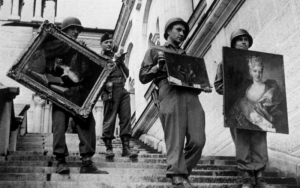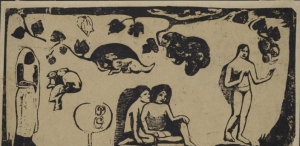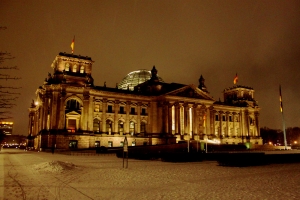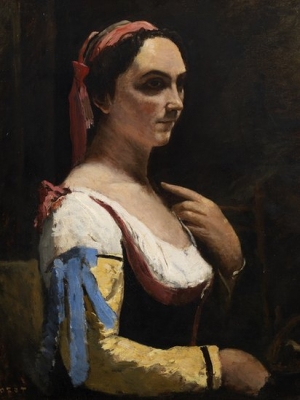|
Displaying items by tag: hitler
The National Gallery of Victoria has taken off display its “yes-no” van Gogh portrait and agreed that despite it having been in Victoria’s collection for 74 years, it rightfully belongs to two unnamed South African sisters, heirs to an estate dispersed under duress during the rise of Hitler.
In what amounts to the first successful Nazi restitution claim on an artwork in an Australian public collection, NGV’s trustees agree Head of a Man was owned by the late Jewish industrialist Richard Semmel until 1933 when he sold it under duress at auction in Amsterdam.

German authorities have appointed 13 experts in art history, provenance research and restitution issues to a task force that will be responsible for establishing the history of hundreds of artworks discovered in a dilapidated apartment in Munich this past November. The works, which include masterpieces by Henri Matisse, Marc Chagall, Pablo Picasso and Albrecht Durer, were found in the possession of Cornelius Gurlitt, the son of Hildebrandt Gurlitt. Hildebrandt had been put in charge of selling Nazi looted artworks abroad by Joseph Goebbels, Hitler’s Minister of Propaganda.
Jane Milosch from the Smithsonian, Thierry Bajou from the Musées Nationaux Récupération in France, Sophie Lillie from Vienna, Agnes Peresztegi from Budapest, and Yehudit Shendar and Shlomit Steinberg, both from Israel, will join the task force’s German members -- Uwe Hartmann, the head of Germany’s office for provenance research, art historian Meike Hoffmann, Michael Franz, the head of Germany’s restitution office, Magnus Brechtken, the deputy director for the Institute for Contemporary History in Munich, Roland Kempfle, a Munich-based prosecutor, Heike Impelmann from the office for unresolved property issues and Stephanie Tasch, who represents Germany’s 16 states.
First, the task force will research the ownership histories of the drawings, prints and paintings believed to have been stolen by the Nazis from their Jewish owners. The task force will then investigate the works believed to have been looted by the Nazis from public institutions. So far, authorities have begun photographing and publishing the artworks. Over 450 pieces have been added to Germany’s Lost Art Internet Database.

London’s Victoria & Albert Museum holds the only known copy of a complete list of “degenerate art” that was confiscated by Nazis from public institutions in Germany. The Entartete Kunst was compiled by Hitler’s Ministry for Public Enlightenment and Propaganda and includes information on the provenance and fate of each work. The list was donated to the museum by the widow of Heinrich Fischer, an Austrian-born art dealer, in 1996. Since its acquisition, the Entartete Kunst has been used by provenance researchers from around the world.
For the first time ever, the Victoria & Albert Museum will make images of the original pages of the Entartete Kunst available online. The 479-page volume lists institutions alphabetically by location and for each museum, the confiscated works are listed and include information on what happened to each piece. For many works, the name of the buyer and a price are given, while others are marked with an “x,” indicating that they were destroyed.
The Nazis deemed any work that was “un-German” or “Jewish Bolshevist“ in nature degenerate art. While virtually all modern art was deemed degenerate, the Nazis promoted paintings and sculptures that were traditional in nature. The Nazis forced avant-garde German artists into exile and their works were either sold at auction or acquired by museums or collectors. In 1942, a large portion of so-called degenerate works by Pablo Picasso, Salvador Dalí, Paul Klee, Fernand Léger and Joan Miró were destroyed in a bonfire.
A PDF of the Entartete Kunst will be made available on the Victoria & Albert museum’s website starting at the end of January.

After a trove of Nazi-looted masterpieces were found in a Munich apartment, the German state of Bavaria has drafted a national law that would ease the return of stolen art to its rightful owners. The new legislation would eliminate the statute of limitations applied to stolen property, which is typically 30 years. Some art collectors have used the law to hold onto artworks with troubled provenances. The draft will go before Germany’s upper house of parliament on February 14.
Back in November 2013, German authorities announced that they had found approximately 1,500 artworks worth around one billion euros in a dilapidated apartment belonging to Cornelius Gurlitt. Gurlitt’s father, Hildebrandt, had been put in charge of selling stolen artworks by Joseph Goebbels, Hitler’s Minister of Propaganda. Gurlitt’s father secretly hoarded the works, which included paintings by Pablo Picasso, Henri Matisse, Pierre-Auguste Renoir and Marc Chagall, later claiming that they were destroyed in the bombing of Dresden. Throughout his life, Gurlitt, an unemployed recluse, sold a number of the paintings and lived off of the profits.
German authorities came under fire when it was revealed that they had known of Gurlitt’s stash since February 2012 but failed to make it public until the following year. They have since posted pictures of more than 400 of the works, inviting rightful owners to stake claims.

An art historian is claiming that two artworks residing inside Germany’s parliament were stolen from their rightful owners by Nazis during World War II. The shocking discovery ran in an article in Bild newspaper on Monday, December 30.
The historian’s investigation into the German parliament’s art collection began in 2012 and determined that an oil painting by Georg Waltenberger and a chalk lithograph by Lovis Corinth had been stolen by Nazis. One of the works was acquired by the parliament from Cornelius Gurlitt, a recluse who was recently accused of hoarding hundreds of masterpieces stolen by Nazis. Gurlitt’s father, Hildebrandt, had been put in charge of selling the stolen artworks by Joseph Goebbels, Hitler’s Minister of Propaganda, but secretly hoarded many of them.
The parliament’s art collection is comprised of nearly 4,000 works and according to investigations, 108 of those pieces are of unknown provenance. The Central Council of Jews in Germany has called for a list of the parliament’s artworks to be published.

The Minneapolis Museum of Arts acquired a rare Renaissance bust of St. John the Baptist yesterday, May 8, 2013. Created by the Italian sculptor Benedetto da Rovezzano (1474-1554), the terracotta bust was one of the works handpicked by Hitler to appear in his Führermuseum, which never came to fruition. The institution was expected to house a massive collection of the most important works of Western Art in the historical canon.
Rovezzano’s bust was bought from Theresia Willi Lanz by Hitler’s special representative, Hans Posse, who was in charge of traveling across Europe seizing important works from Jewish art collectors and buying them from non-Jewish collectors. After the Führermuseum was never realized, the bust was hidden along with a number of important works by Leonardo da Vinci (1542-1519), Vermeer (1632-1675), and Michelangelo (1475-1564) in a salt mine in Austria. As it became clear that the Nazis would not win World War II, Hitler’s officials called for the destruction of the mine. However, the miners from the Austrian town wished to keep their livelihood intact and worked to save the mines and the art inside by removing inactivated Nazi bombs and setting them off through controlled explosions within the tunnels of the mines, saving the salt and the art but making them inaccessible. The bust was ultimately returned to the Netherlands.
Rovezanno was one of the most prominent sculptors during the high Renaissance and his bust of St. John the Baptist is well known among Renaissance experts. Created in Florence during the time when Leonardo, Michelangelo, and Raphael (1483-1520) were working there, the bust is the earliest Renaissance sculpture in the Minneapolis Institute’s collection. The bust of St. John the Baptist will go on view in the Minneapolis Institute of the Arts permanent galleries alongside other renowned Renaissance busts by Agostino Zoppo (circa 1520-1572) and Giovanni Battista Caccini (1556-1613).

The late German-born British painter, Lucian Freud (1922-2011), specified in his will that his private art collection was to be donated to British museums rather than burdening his family with an inheritance tax after his death. The bequest is part of a British law that allows “acceptance in lieu” of taxes for authors, artists, and collectors.
Considered one of Britain’s greatest painters best known for his portraits and figurative works, Freud owned a number of important masterpieces including Jean-Baptiste Camille Corot’s (1796-1875) Femme á la Manche Jaune (The Italian Woman or Woman with Yellow Sleeve) and three bronze sculptures by Edgar Degas (1834-1917). It has been determined that the Corot painting, which has not been on public view in over 60 years, will go to the National Gallery in London and the Degas sculptures, Horse Galloping on Right Foot, La Masseuse, and Portrait of a Woman Head Resting on One Hand, will go to Somerset House’s Courtauld Gallery.
The donation is a thank you of sorts from Freud to Britain. The grandson of Sigmund Freud, Lucian escaped Hitler’s wrath when he came to England as a child. He became a British citizen in 1939.
|
|
|
|
|